Fan Bracing on Martin Guitars
I've spent a large part of the past six or seven years intently focused on collecting C.F. Martin and related guitars of a transitional nature that illuminate the evolution of the American steel string flat top guitar, from the earliest Viennese Style ladder braced guitars made when C.F. Martin first set up shop in New York in the early 1830's, to the Spanish influenced fan braced guitar, through several early variants of X bracing, to the early Dreadnaught, to the first "modern" 14 fret X braced steel string guitars that Martin promoted in the 1930's, that are still considered the epitome of the art of guitar making today.
I have acquired and studied roughly 30 Martins from the earliest period ending with C. F. Martin's incorporation in 1867, as well as another eighteen or so instruments made by Stauffer, Recio of Cadiz, Schmidt & Maul, Ashborn, Bohman, and others. While it is understandingly tempting to focus on the "eye candy" of Martin's fanciest guitars, I believe that a rigorous study must include Martin's "bread and butter", the everyday guitars that formed the bulk of his output, as well. While the early "Presentation" Martins can be breathtaking, and I've been more lucky than anyone has a right to be in collecting a good number of the nicest, most unique and singular examples of Martin's work, these custom made instruments are by definition not typical, and so were often made with materials and building techniques that were not typical, and could possibly lead one to atypical conclusions.
While the development of the X brace in the mid 1840's was an important event in the evolution of the American steel string guitar, the X brace was an oddly poor fit at the time. Martin built most of their guitars with a combination of X bracing and gut strings for roughly 80 years before beginning to routinely ship guitars with steel strings in the 1920's, and quite frankly, X bracing was not a good choice for gut string guitars, not sounding nearly as lovely, in the opinion of most today, as early fan braced Martins. So I believe it is important to study the development of X braced guitars in the full context of their evolution to the steel string guitar in the 1930's, and so have acquired and carefully studied 25 Ditson and Southern California Musical Instrument Store examples, and the first cataloged Martin steel string to ship, to illustrate the development of the steel string and Dreadnaught guitars, as well as acquiring roughly 18 Carl Fisher, OM, and other early "Orchestra Model" 14 fret guitars that illustrate the introduction of the modern14 fret steel string guitar.
I've also acquired and studied at least two dozen Martin guitars from the remainder of the 19th Century. While these instruments were the first Martins to become standardized, they have no serial numbers or other way to determine even the decade of manufacture, with the exception of guitars made in certain periods only, which were signed and dated under the top. So I've made a point of studying the smallest and most obscure details, such as the spacing of back braces and styles of case hardware, in order to be the first, I believe, to seriously look to find ways of dating later 19th Century Martins.
Over these past several years, I've created endless spreadsheets cataloging information gained by investigating Martin bracing and other features through visual inspection, interior photos, X rays, "Henkograms", a Hacklinger depth gauge, light tracings, rulers and scales.
Interestingly, C. F. Martin and his former employees Schmidt & Maul, worked in parallel, building guitars with identical features and several of the exact same early variations of X bracing. It is unknown whether the the firms collaborated or competed, as all records from the period are missing.
C.F. Martin built his first guitars in the 1830's with the same ladder braces seen on the guitars of his mentor, Stauffer, in the Viennese tradition.
Martin Stauffer
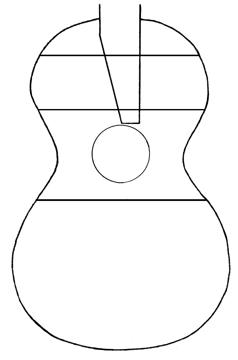
By 1837, the ladder bracing had been modified.
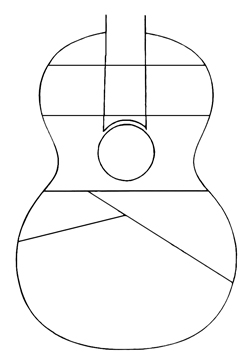
By the 1940's, Martin had discovered guitars built in the Spanish tradition, with fan braces.
Recio, Cadiz
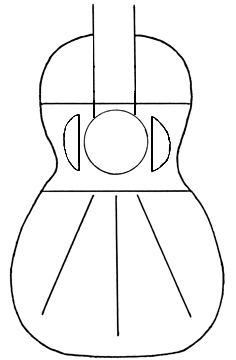
Louis Panormo Spanish Style
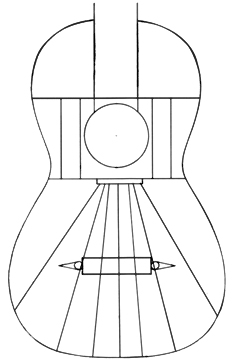
Martin & Coupa Spanish
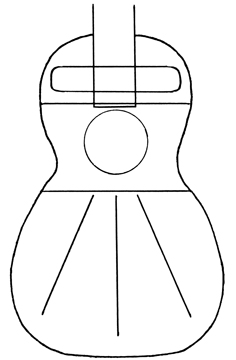
Schmidt & Maul, a partnership of George Maul and Louis Schmidt, a former Martin employee, remained in New York building guitars after Martin moved to Pennsylvania. I'm beginning to think that Schmidt and Maul were Mr. Martin's bracing Gurus. By the time Martin had discovered Spanish style guitars in the early 1830's, Schmidt and Maul were also builing very similar Spanish Style guitars. It's unknown whether Martin and Schmidt & Maul were in competition or collaborating, as all of Martin's records from the period have been lost, I believe there are too many similarities to their guitars for them no to have collaborated, as photos of this early Spanish Schmidt & Maul along side the Spanish Martin & Coupa above will show.
Schmidt & Maul Spanish
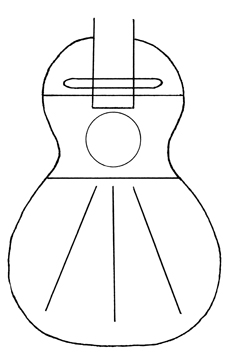
Martin & Coupa Goncalo Alves Spanish
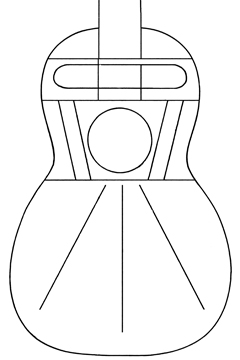
Martin continued using fan braces on many of their guitars through the end of the century, including the unique "Rennaissance" Style guitars.
Martin Renaissance
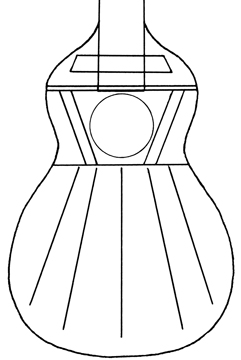
This 1840's presentation Spanish Style Martin adds a finger brace to the treble side.
Martin 1840's Spanish Presentation
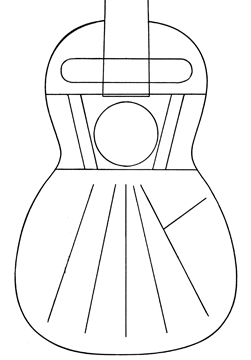
Both C.F. Martin and Schmidt & Maul built guitars in the mid 1940's that experimented with different variations of bracing that led to the "mature X bracing" that is standard on nearly all steel string guitars today. I've coined the term "HybridX" to describe this first form, as it shows elements of both fan bracing and X bracing. It essentially consists of the two outer blades of a fan brace on either side of a narrow full size X brace. This exact same configuration can be seen on guitars of this period built with the "Martin", "Martin & Coupa", and Schmidt & Maul" names.
Martin Hybrid X
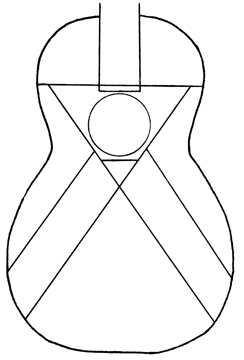
Martin & Coupa Hybrid X
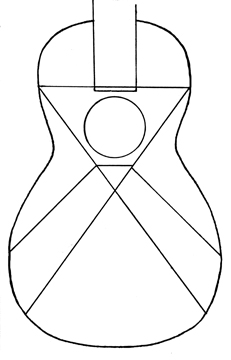
This first "Alternate X" Martin consists of a large X brace, with a tone bar crossing the treble side of the large X to form a smaller X on the treble side of the guitar.
Martin Alternate X
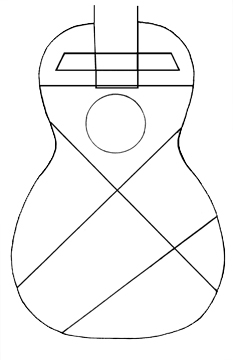
This 1847 "AlternateX" Schmidt & Maul guitar utilizes a very similar concept built on a foundation of fan bracing, with a tone bar crossing the treble blade of the fan to form a smaller X on the treble side of the guitar.
Schmidt & Maul Alternate X
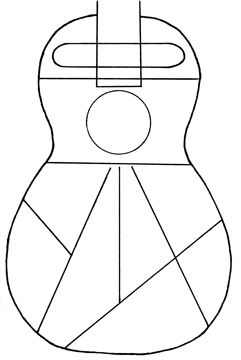
This c. 1847 Martin, with most of the stylistic features of a Spanish Style guitar, but with X bracing, has been called, by at least one early Martin expert, perhaps the earliest known Martin to show the full "Mature X" essentially as it exists today.
Martin Spanish Mature X
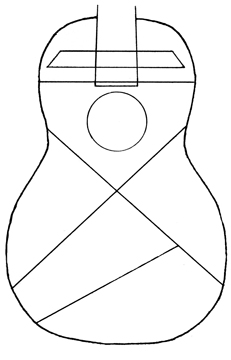
In 1916, Martin began building Hawaiian guitars for the Ditson Company and the Southern California Music Stores which were Martin's first cataloged Steel string guitars. Interestingly, while Martin had built X braced guitars from the late 1840's for most of their better gut string guitars, Martin chose to revert to fan bracing for their first steel strings.
Martin Ditson 2
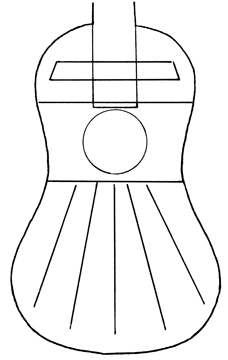
Martin Bracing Diagrams
These diagrams were made through the use of exterior tracing, personal inspection, measuring with rulers, interior photographs, X-rays, "Henkograms", and illuminating the interior of the guitar so the shadows of the braces can be seen and marked.
I am in the process of measuring the shapes and dimensions of top braces, with the help of caliper, rulers, Hacklinger gauge, and X-rays, and will add cross-sectional diagrams showing the contours of the top braces soon.
Here is a diagram for the Stauffer Style Martin, the earliest known Martin c. 1833.
Martin's earliest guitars had ladder bracing.
Martin c. 1833 Stauffer Style
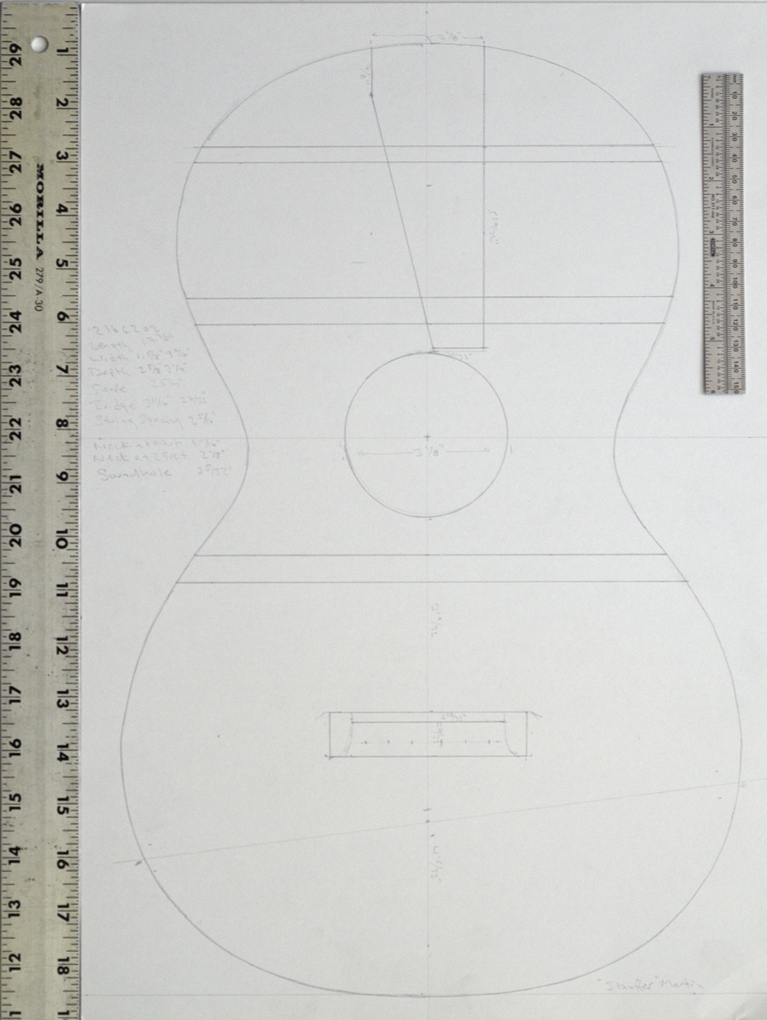
It is very possible that C.F. Martin was first introduced to Spanish Style guitar after Trinidad Huerta, who was married to the daughter of Louis Panormo, the prolific luthier who built Spanish Style guitars in London, was the first classical guitarist to perform in the United States as early as 1825 as well as tour Europe extensively.
By 1837, the ladder bracing had been modified, with braces in the lower bout moving to a diagonal.
Martin 1837 Hudson Street Guitar
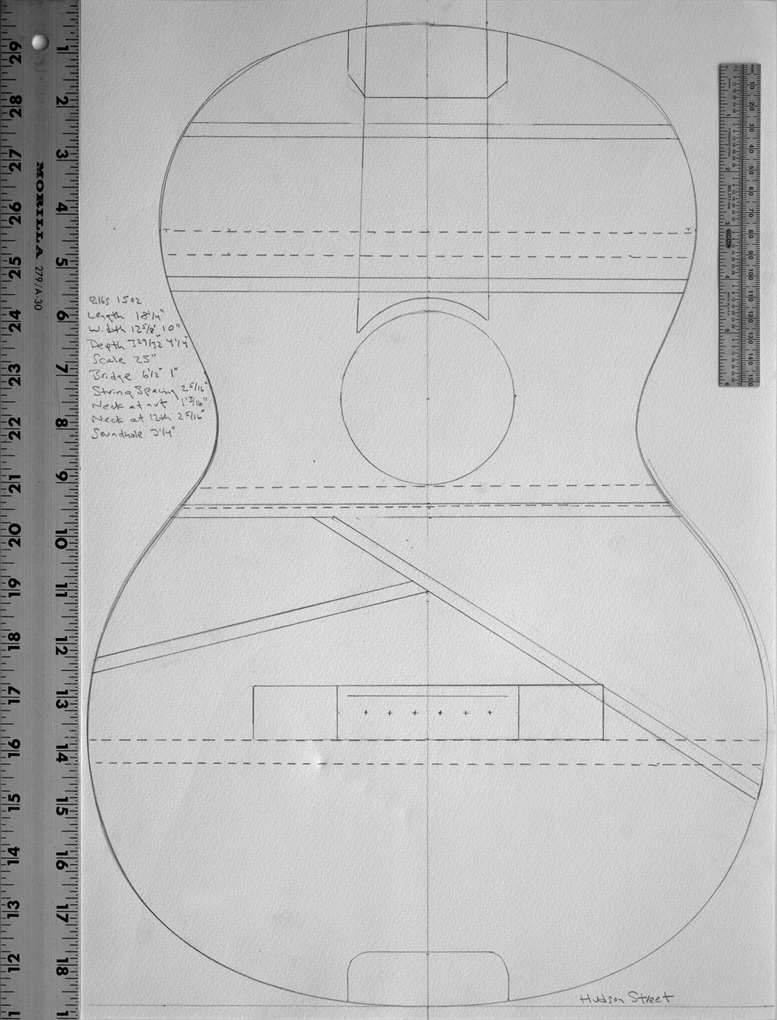
Louis Panormo 1832 Spanish Style Guitar
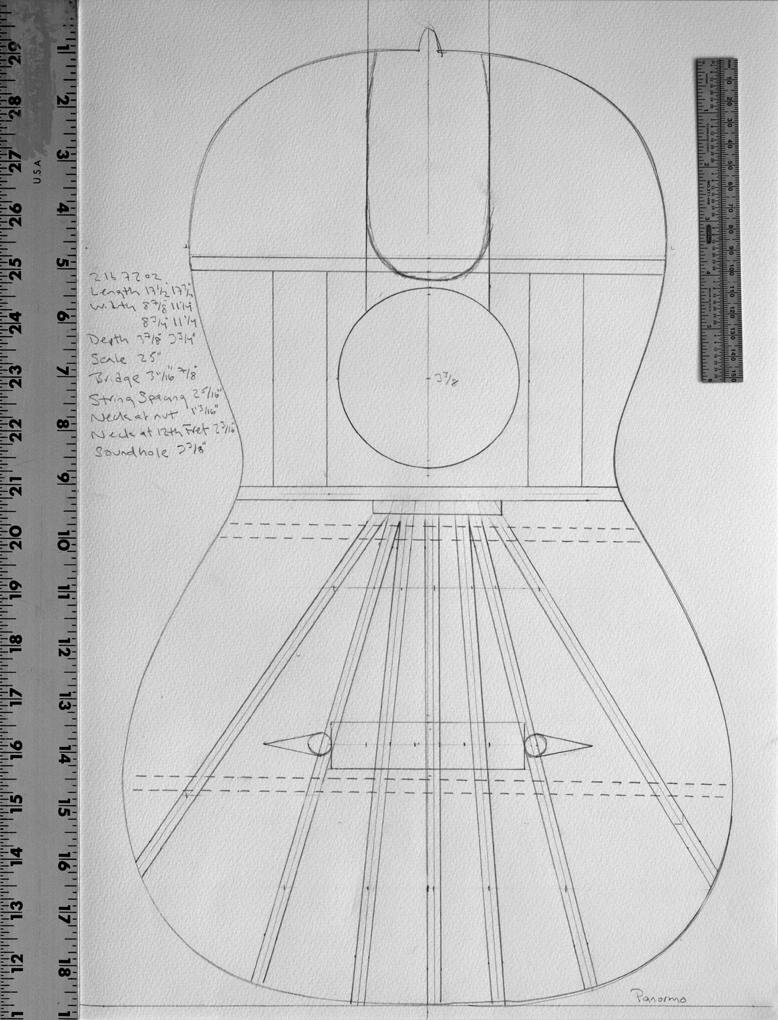
Jose Recio, Cadiz, Spain
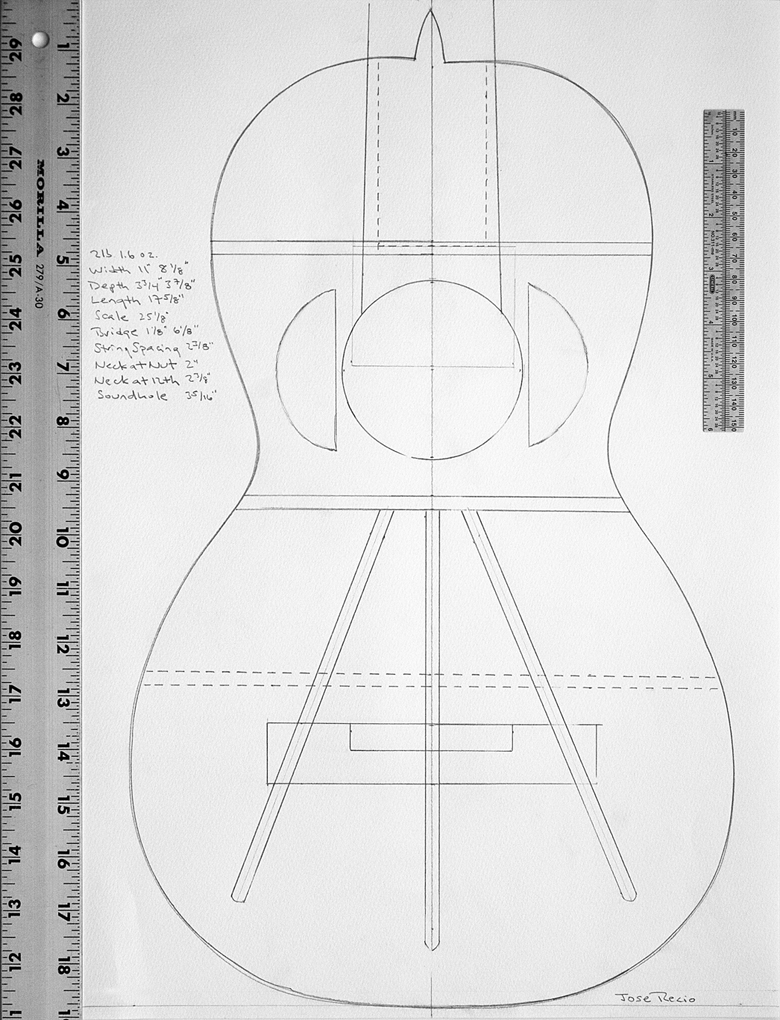
And here is a diagram for a very early Spanish Style Martin & Coupa, from the 1840's, with fan braces:
Martin & Coupa 1840's Spanish Style
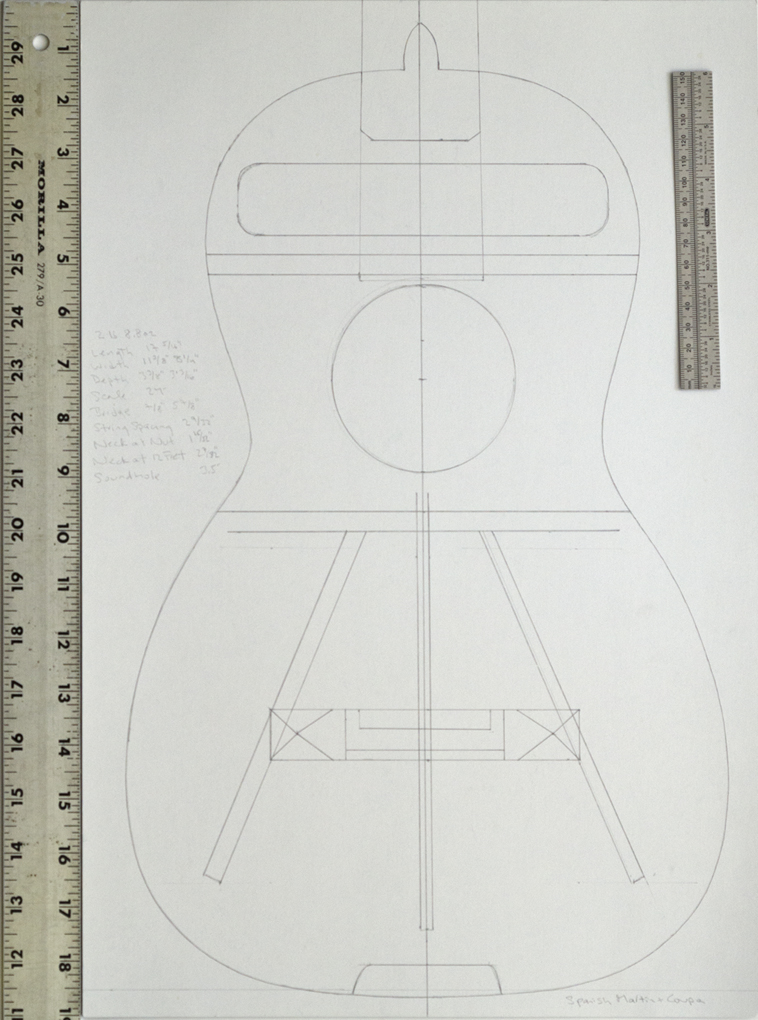
This Spanish Schmidt & Maul from the 1840's is nearly identical to the Spanish Martin & Coupa with fan bracing.
Schmidt & Maul 1840's Spanish Style:

This 1840's Martin & Coupa made of Goncal Alves also has a simple three bladed fan.
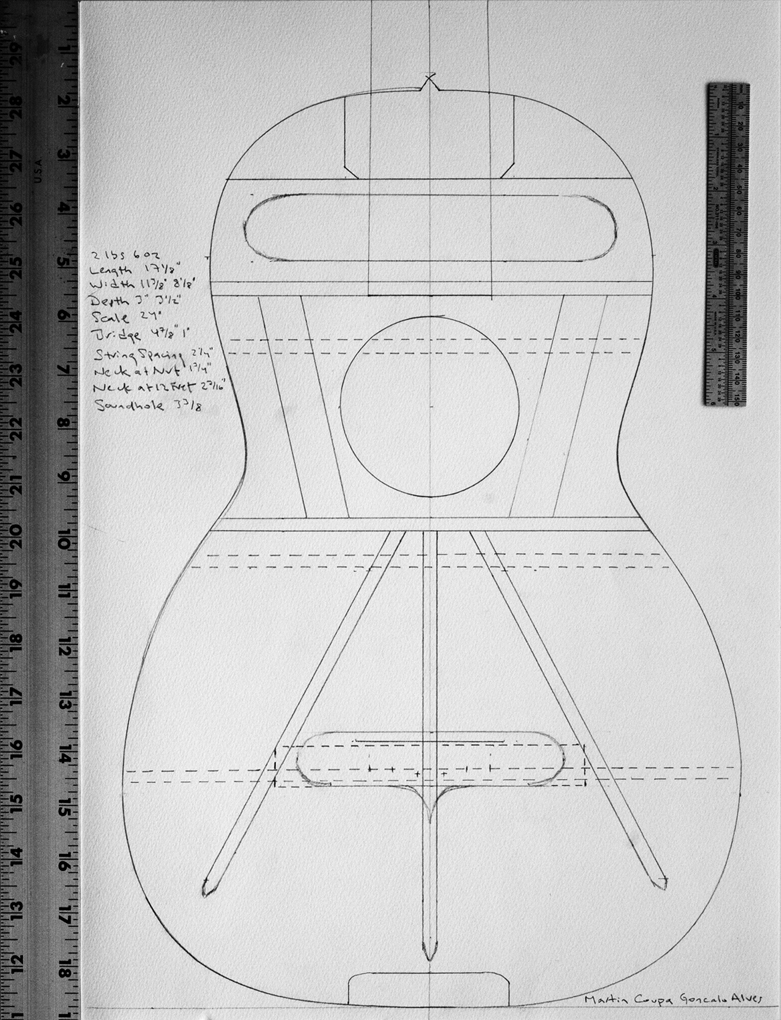
This unusual "Renaissance" Martin from the 1840's was also braced with fan braces.

This 1840's presentation Martin with Spanish fan bracing adds a treble side finger brace to the five blade fan.
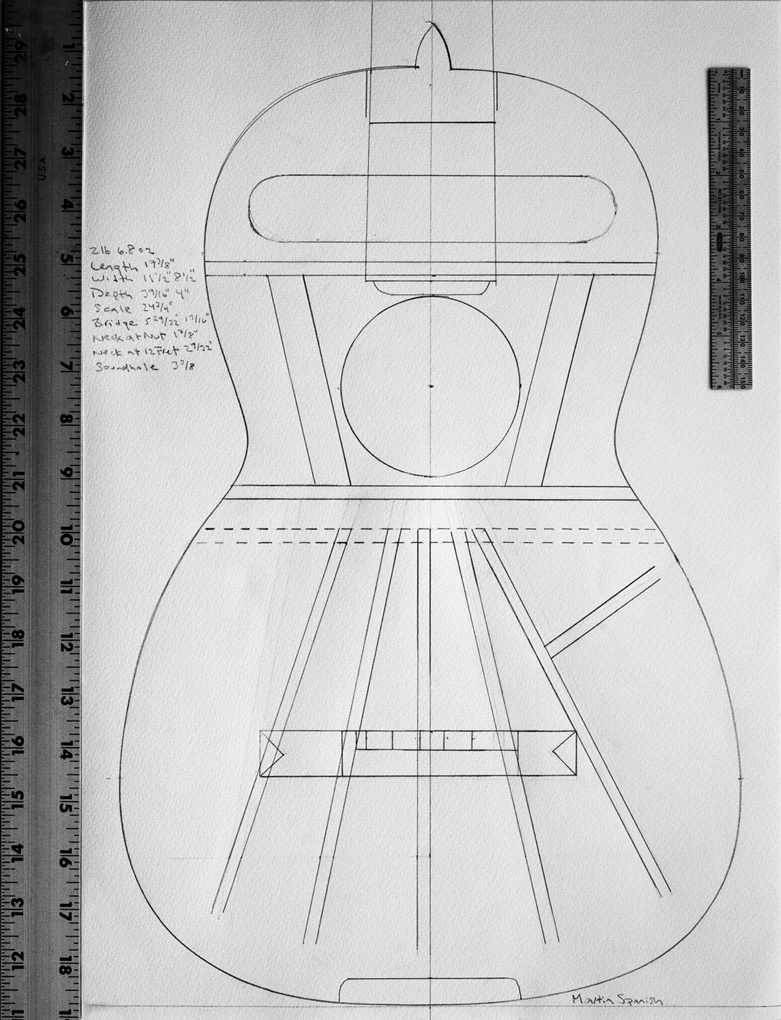
Martin returned to fan braces, oddly enough, for the first steel string guitars, Hawaiian guitars made for the Ditson and Southern California Music Stores.
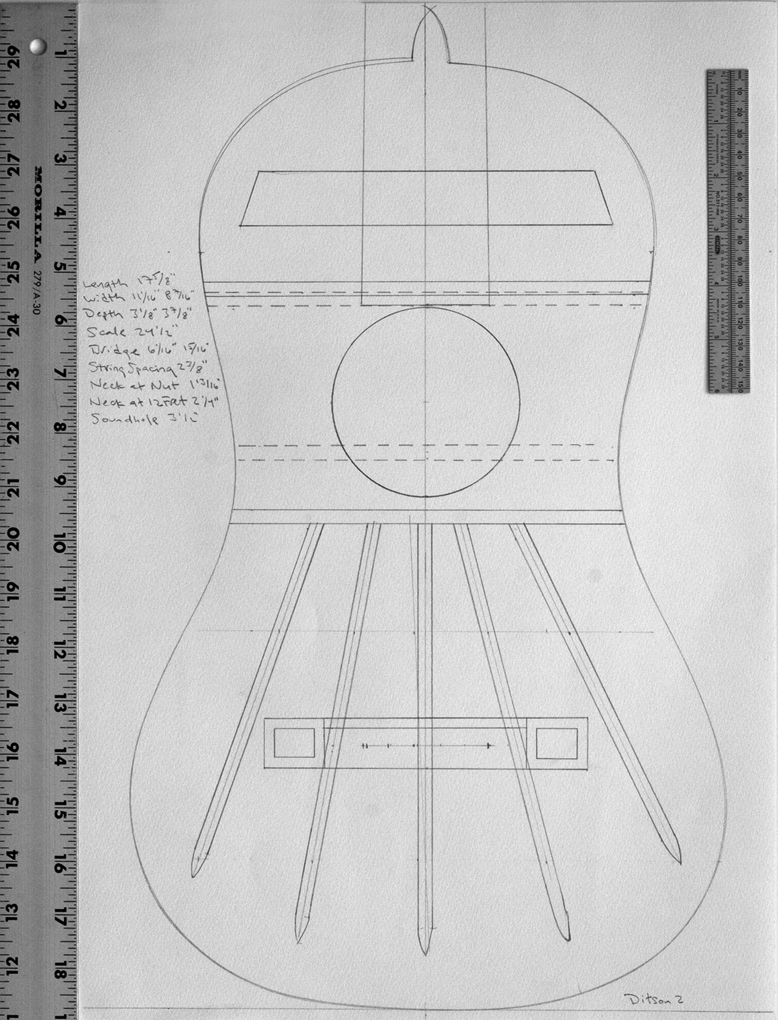
While the earliest Martin guitars were ladder braced, Martin was influenced by Spanish builders in the 1840's and began adopting the fan bracing employed by the Spanish Style guitar, such as this 1845 Jose Recio of Cadiz:
1845 Jose Recio, Cadiz, Spain
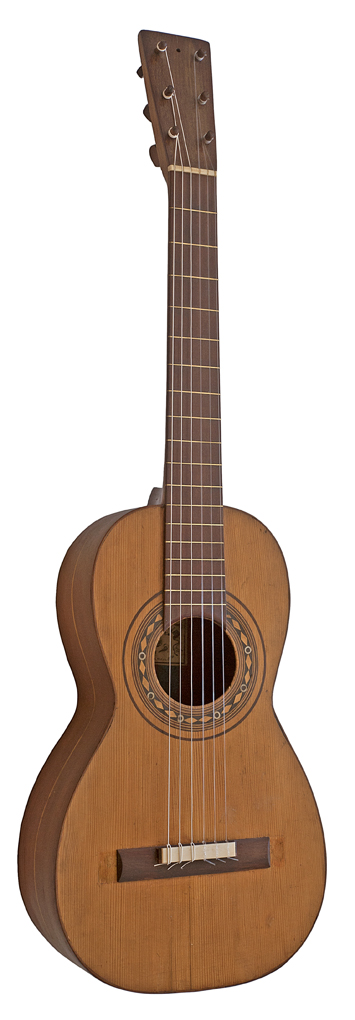
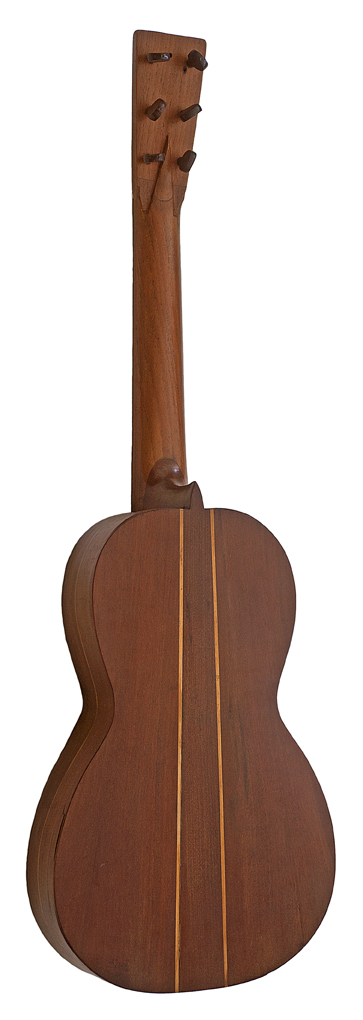
Panormo was a prolific London luthier who built in the Spanish Style. Martin may also have been influenced by the Spanish Style guitars of Panormo, who's son in law was the first classical guitarist to perform in the United States.
1832 Panormo
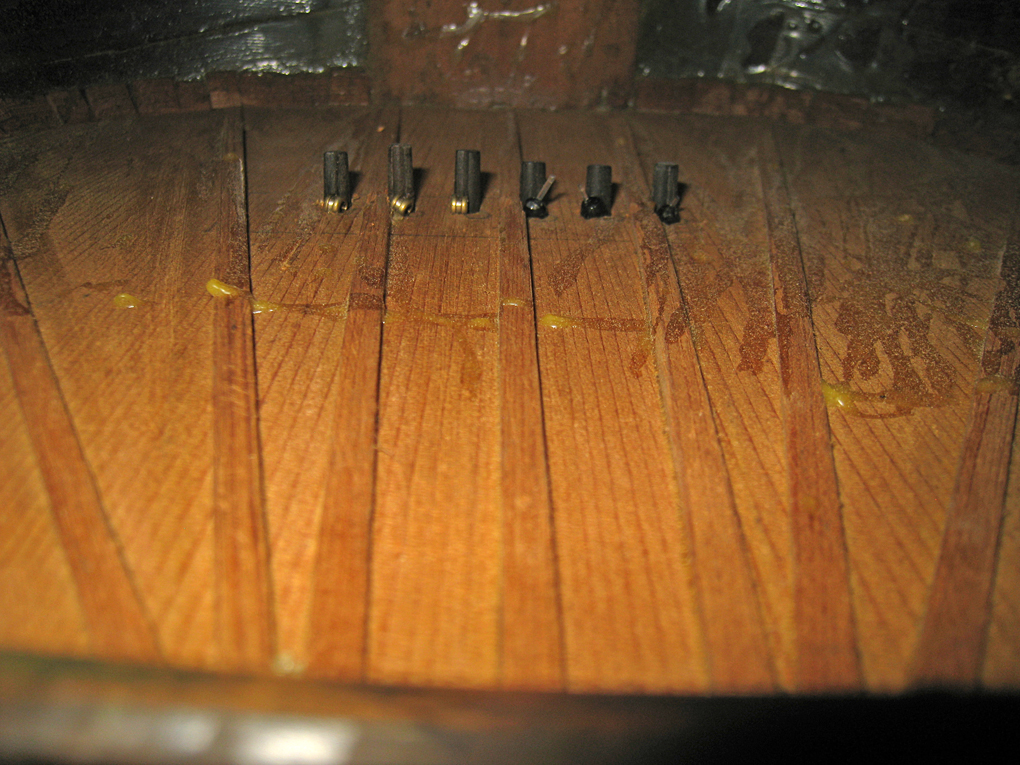
Jose Recio, Cadiz, Spain
C.F. Martin was influenced by the early guitars of Cadiz, Spain.
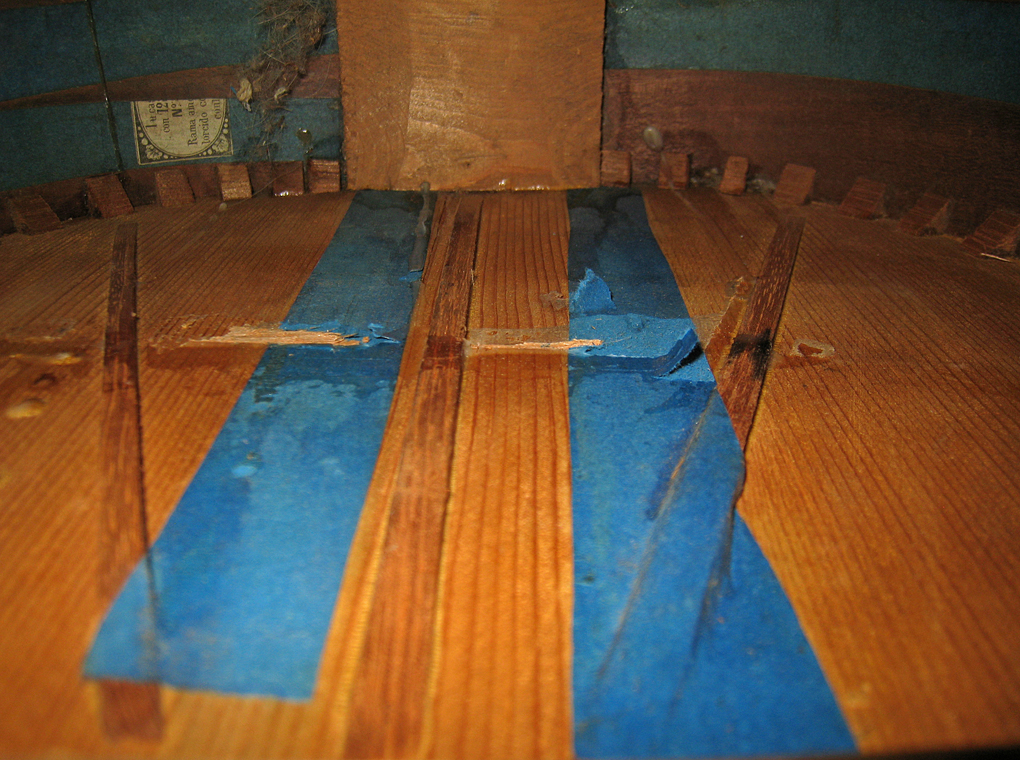
Some early Martins had fan bracing with three blades to the fan, while others had five.
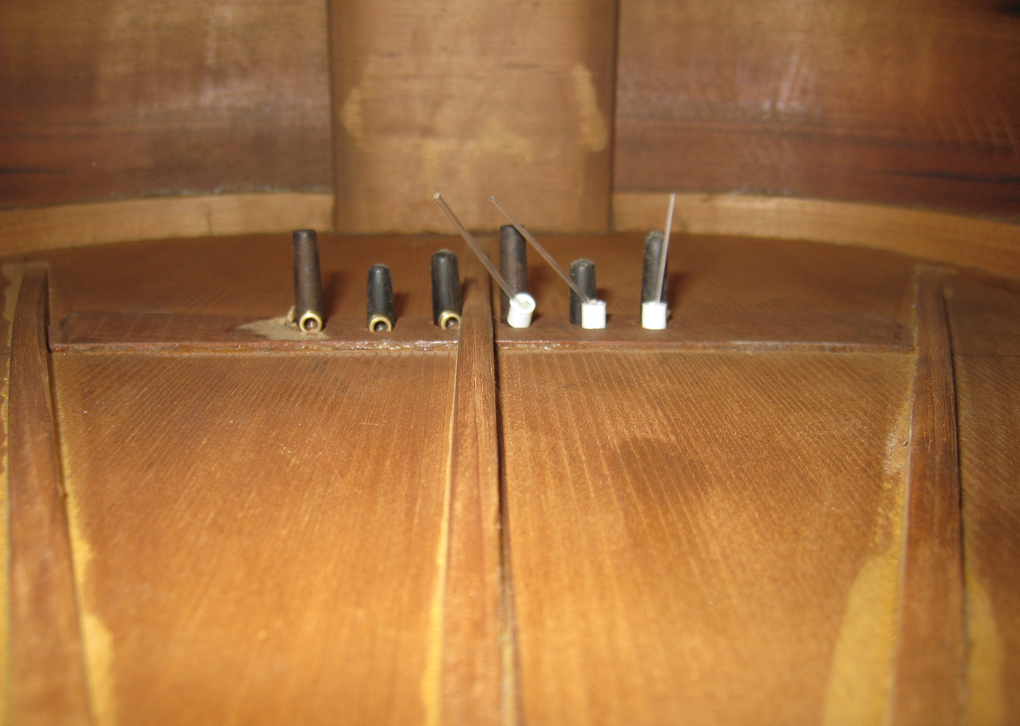
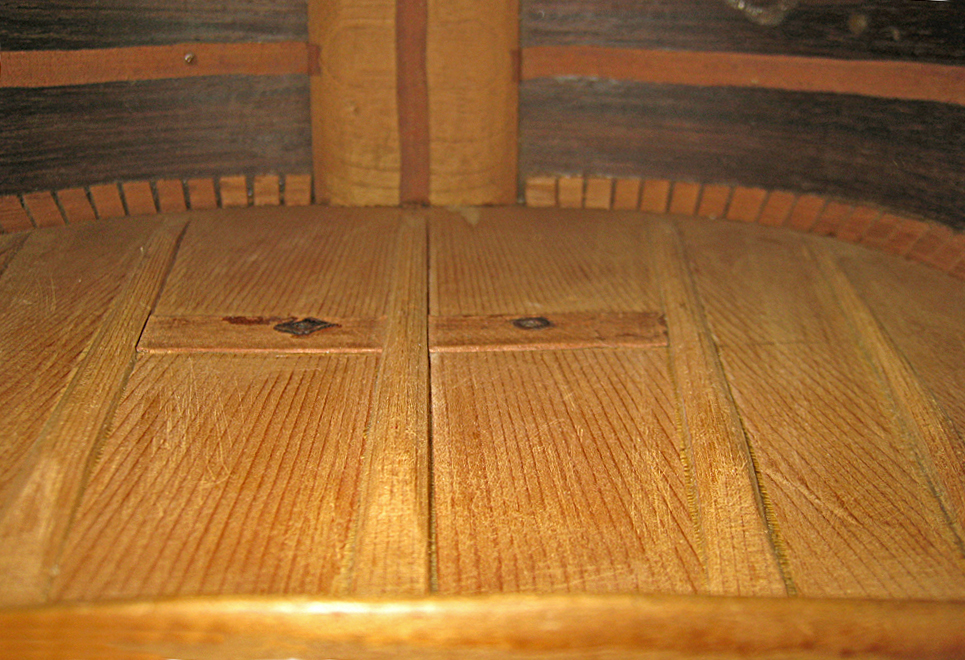
Both the earliest Schmidt & Maul and the earliest Martin & Coupa Spanish Style guitars have thick beveled blocks with bolts between the three rounded blades of the fan in place of a bridge plate.
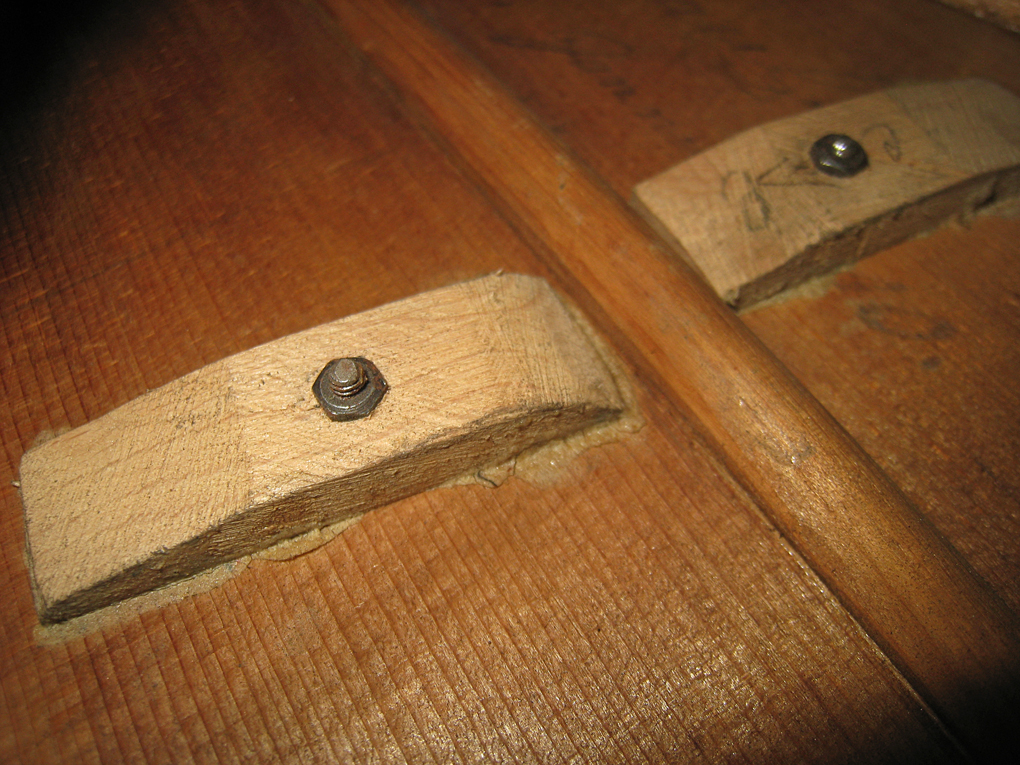

The Schmidt & Maul top is signed underneath the top: "George Maul, New York, January 30, 1944"
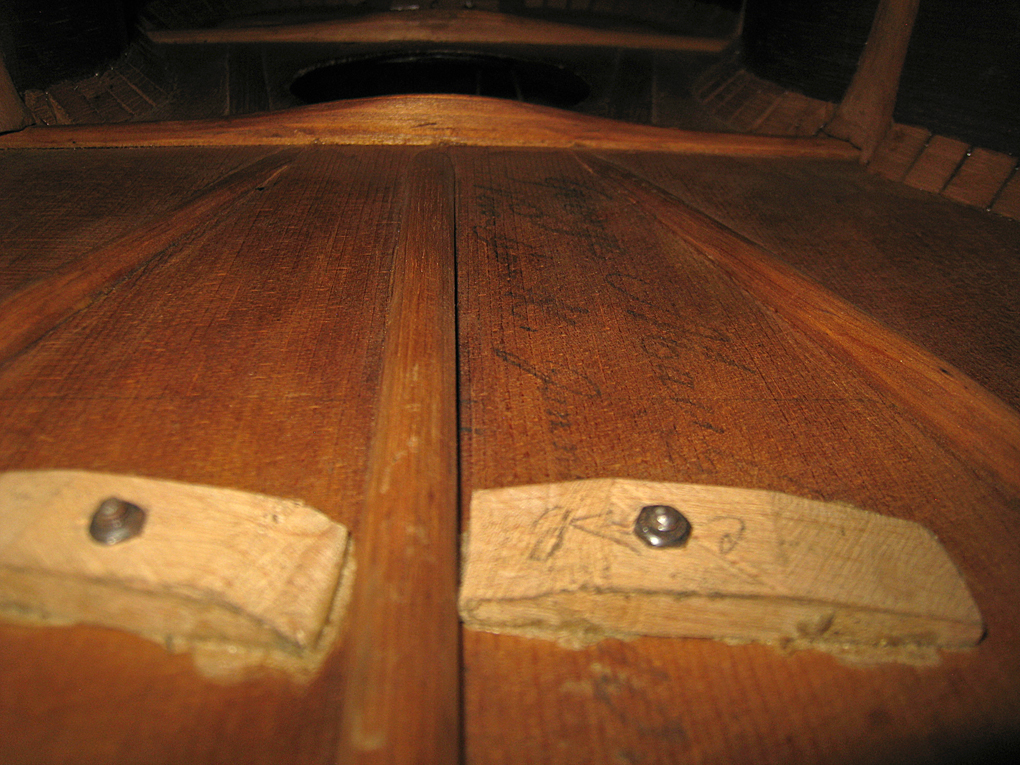
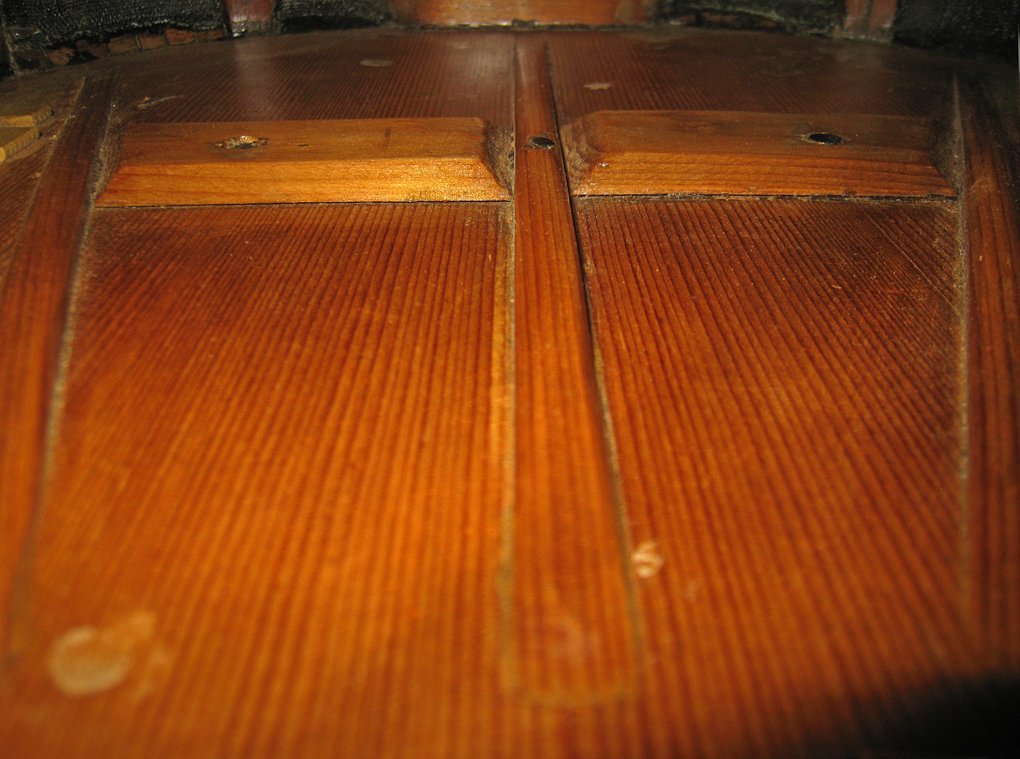
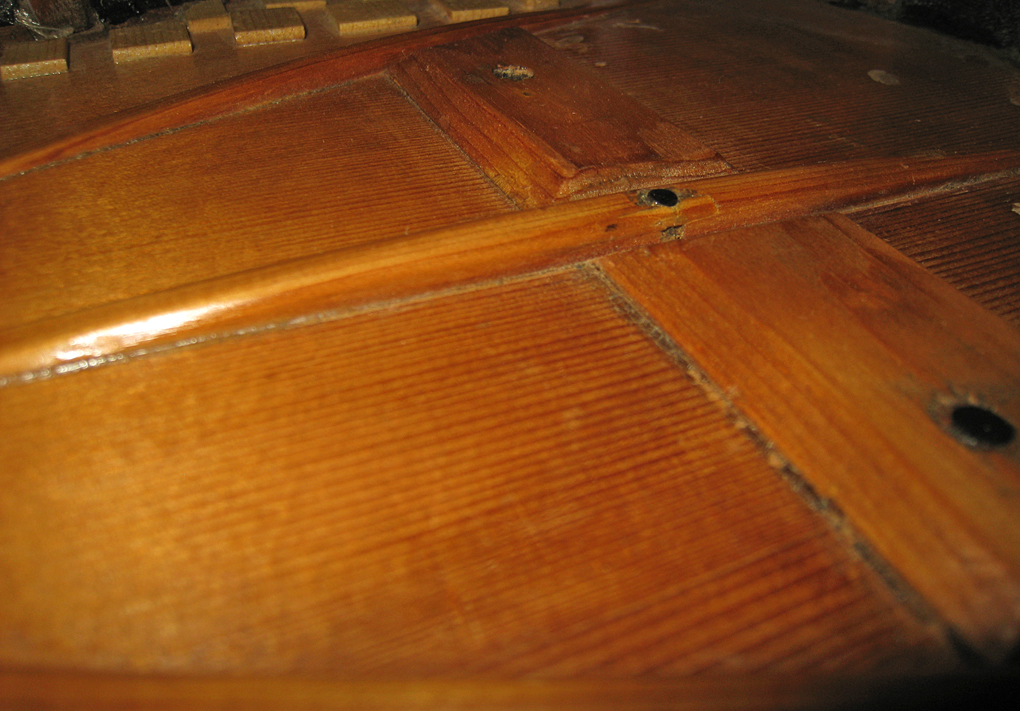
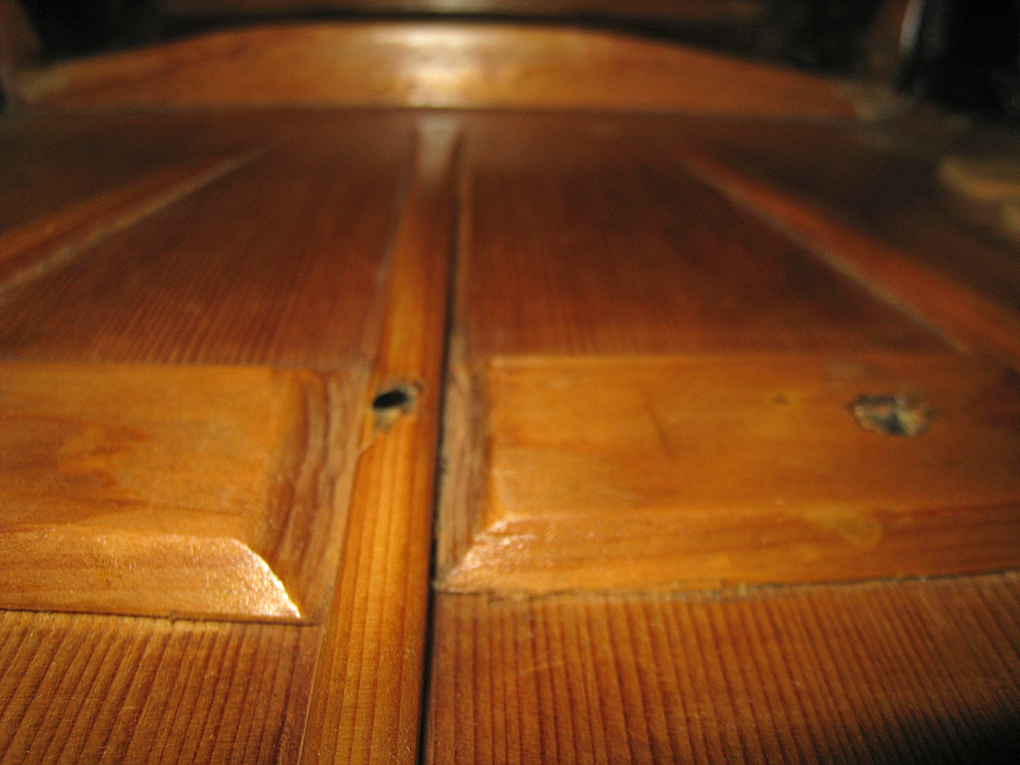
vintagemartin.com
To See Robert Corwin's Classic Photography of Folk and Roots Musicians, visit:
For Information on Photography for
Exhibition, Publication, CD's, Promotion, Web Pages, Tour Books,
to Purchase Photographic Prints, or
If You Have Questions or Suggestions About This Web Site or Vintage Martin Guitars:
e-mail: Robert Corwinentire site copyright ©1998 through 2013 Robert Corwin/Photo-Arts. All rights reserved.